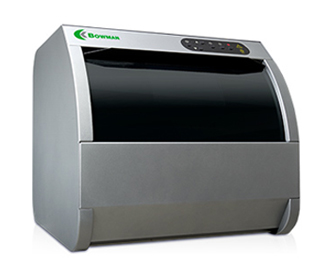Measuring Chromates and Passivates
Conversion coatings are a method of passivating metals by chemically transforming the outer surface into an oxide that improves corrosion resistance and other desirable properties. Solutions containing chromate salts are a popular choice for creating conversion coatings on galvanized (zinc-plated) steel and aluminum, as chromate conversion coatings not only resist corrosion, but can also maintain conductivity, improve mechanical properties, and provide superior adherence for further coatings such as paints and adhesives.
The terms chromate and passivate are sometimes used interchangeably. Generally chromates refers to refers to a conversion process involving hexavalent chrome (Cr6+ state). Due to environmental and health hazards of hexavalent Chromate, many directives (European legislation ELV , ROHS, REACH, WEEE) are driving the switch to Trivalent passivate (Cr3+).
Thin chromate conversion coatings (<1µm) are popular choice for coating fasteners and tools, as it has a minimal effect on dimensions while still improving durability, depending on the thickness of the chromate layer. The thickness of the chromate layer also affects the preservation of electrical conductivity. So, it is important to ensure chromate thickness is within the proper range. However, many common coating thickness measurement methods are ineffective due to the thinness of the chromate layer.
Bowman XRFs are capable of measuring conversion coatings as thin as a few nanometers, namely due to advantages such as lower detection limits and the ability to clearly separate Cr, Fe, and Zn peaks. Additionally, XRF is non-destructive and has minimal sample preparation time compared to methods such as cross-sectioning and SEM. Thickness readings are generated in seconds.
Read our short Chromate Conversion Coatings Application Bulletin to learn more.
Conclusion
Bowman XRF systems are versatile analytical tools for measuring chromate conversion coatings, along with other plating thickness and composition as well as solution analysis. The reduced costs of time, personnel, and instrumentation required by other methods make Bowman XRF an excellent alternative. Call our support Team for more information.
Need Help? LET’S TALK





 Made in the USA
Made in the USA